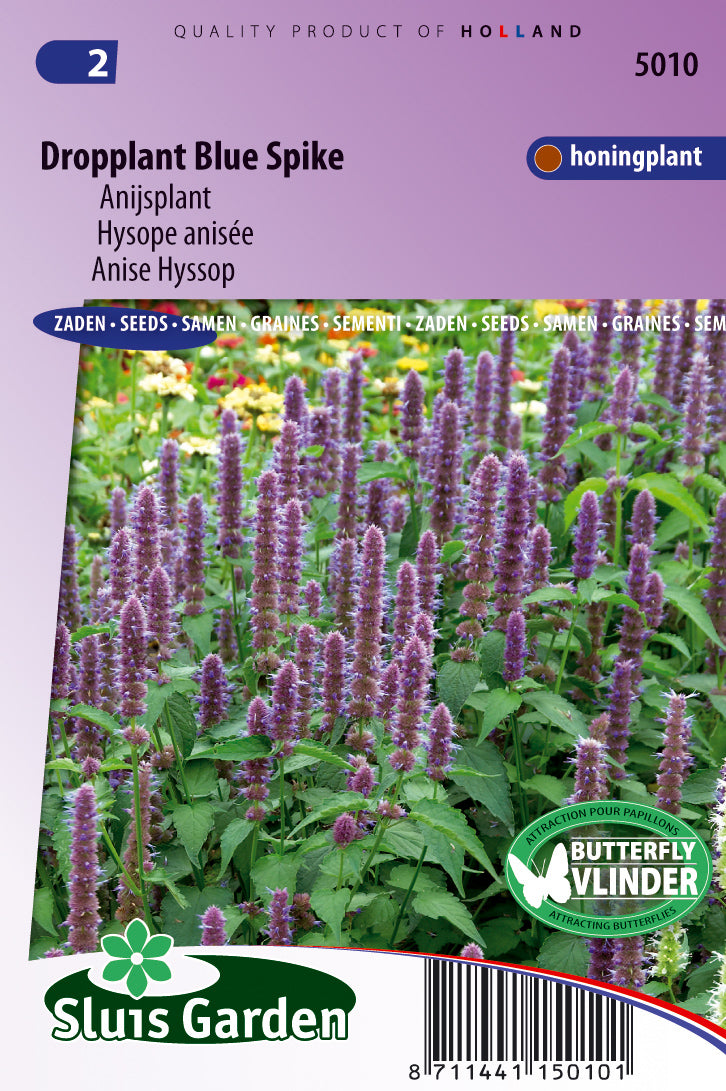1
/
of
1
Agastache foenculum Blue Spike
Agastache foenculum Blue Spike
Regular price
1.350 KWD
Regular price
Sale price
1.350 KWD
Unit price
/
per
Shipping calculated at checkout.
Couldn't load pickup availability
Agastache foeniculum, commonly known as Anise Hyssop or Blue Spike, is a fragrant and attractive herbaceous perennial that is known for its aromatic leaves and spikes of blue flowers. Here's a guide on how to grow Agastache foeniculum 'Blue Spike':
**1. Planting Time:**
- Plant Agastache foeniculum seeds indoors 6-8 weeks before the last expected frost in your area. Alternatively, you can sow seeds directly outdoors after the last frost.
**2. Soil Preparation:**
- Choose well-draining soil with a pH between 6.0 and 7.5.
- Incorporate organic matter into the soil to enhance fertility and drainage.
**3. Sowing Seeds:**
- If starting seeds indoors, sow them in seed trays or pots. Press the seeds lightly into the soil, and cover them with a thin layer of soil.
- Keep the soil consistently moist until germination occurs.
**4. Transplanting:**
- Transplant seedlings outdoors after the danger of frost has passed and they are large enough to handle.
- Space the plants about 18 to 24 inches apart.
**5. Sunlight:**
- Agastache foeniculum prefers full sun to partial shade. Ensure they receive at least 6 hours of sunlight daily for optimal growth and flowering.
**6. Watering:**
- Once established, Agastache is drought-tolerant. Water regularly during dry periods, but be cautious not to overwater, as they are susceptible to root rot.
**7. Fertilizing:**
- Agastache generally doesn't require heavy fertilization. Use a balanced, all-purpose fertilizer in spring, and avoid excessive nitrogen.
**8. Mulching:**
- Apply a layer of mulch around the plants to help retain soil moisture and suppress weeds.
**9. Pruning:**
- Deadhead spent flowers regularly to encourage continuous blooming.
- Cut back the plants in late fall or early spring to encourage bushier growth.
**10. Winter Care:**
- Agastache foeniculum is generally hardy, but in colder climates, provide a layer of mulch to protect the roots during winter.
**11. Pest and Disease Management:**
- Agastache is generally resistant to pests and diseases. However, you may need to watch for aphids or spider mites. Use insecticidal soap or neem oil if needed.
**12. Companion Planting:**
- Agastache foeniculum attracts pollinators like bees and butterflies, making it a beneficial companion plant in your garden.
**13. Uses:**
- Agastache foeniculum is not only an ornamental plant but also has culinary uses. The leaves have a mild anise or licorice flavor and can be used in teas, salads, or as a seasoning.
Growing Agastache foeniculum 'Blue Spike' can add a burst of color and fragrance to your garden, attracting pollinators and providing culinary benefits. Adjust care based on your specific growing conditions and local climate.
**1. Planting Time:**
- Plant Agastache foeniculum seeds indoors 6-8 weeks before the last expected frost in your area. Alternatively, you can sow seeds directly outdoors after the last frost.
**2. Soil Preparation:**
- Choose well-draining soil with a pH between 6.0 and 7.5.
- Incorporate organic matter into the soil to enhance fertility and drainage.
**3. Sowing Seeds:**
- If starting seeds indoors, sow them in seed trays or pots. Press the seeds lightly into the soil, and cover them with a thin layer of soil.
- Keep the soil consistently moist until germination occurs.
**4. Transplanting:**
- Transplant seedlings outdoors after the danger of frost has passed and they are large enough to handle.
- Space the plants about 18 to 24 inches apart.
**5. Sunlight:**
- Agastache foeniculum prefers full sun to partial shade. Ensure they receive at least 6 hours of sunlight daily for optimal growth and flowering.
**6. Watering:**
- Once established, Agastache is drought-tolerant. Water regularly during dry periods, but be cautious not to overwater, as they are susceptible to root rot.
**7. Fertilizing:**
- Agastache generally doesn't require heavy fertilization. Use a balanced, all-purpose fertilizer in spring, and avoid excessive nitrogen.
**8. Mulching:**
- Apply a layer of mulch around the plants to help retain soil moisture and suppress weeds.
**9. Pruning:**
- Deadhead spent flowers regularly to encourage continuous blooming.
- Cut back the plants in late fall or early spring to encourage bushier growth.
**10. Winter Care:**
- Agastache foeniculum is generally hardy, but in colder climates, provide a layer of mulch to protect the roots during winter.
**11. Pest and Disease Management:**
- Agastache is generally resistant to pests and diseases. However, you may need to watch for aphids or spider mites. Use insecticidal soap or neem oil if needed.
**12. Companion Planting:**
- Agastache foeniculum attracts pollinators like bees and butterflies, making it a beneficial companion plant in your garden.
**13. Uses:**
- Agastache foeniculum is not only an ornamental plant but also has culinary uses. The leaves have a mild anise or licorice flavor and can be used in teas, salads, or as a seasoning.
Growing Agastache foeniculum 'Blue Spike' can add a burst of color and fragrance to your garden, attracting pollinators and providing culinary benefits. Adjust care based on your specific growing conditions and local climate.
Share

